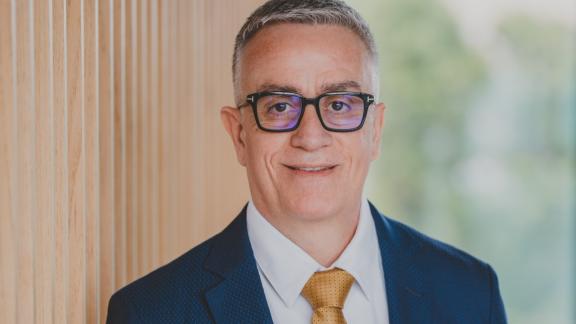FRESNO, CA – Filled with a plethora of signs and directories, health facilities can be challenging places to navigate, particularly for people who don’t speak English. Federal law requires health facilities to display signs that all patients, even those unable to read or speak English, can understand. Four organizations have volunteered to make their new buildings easier to navigate by using graphic symbols to replace traditional signs using written words.
With support from the Robert Wood Johnson Foundation’s (RWJF) Pioneer Portfolio, Hablamos Juntos initiated the process of using symbols language to improve communication for limited English-speaking patients in health care. Through a joint effort, Hablamos Juntos and the Society for Environmental Graphic Design (SEGD), produced 28 universally recognized graphic health care symbols depicting important hospital destinations ranging from registration and surgery to billing and infectious diseases. Now, additional funding from RWJF’s Pioneer Portfolio will enable four health facilities to be among the first in the nation to implement new symbols-based signage systems.
“Unlike the transportation field, in which airports and train stations can be mandated to adopt symbols for directional systems, health facilities will require innovators and early adopters like these volunteer facilities to lead the way,” said Yolanda Partida, director of Hablamos Juntos, a foundation-funded program administered by UCSF Fresno that is dedicated to developing practical tools to overcome language barriers to health care. “Health environments can be scary places. With language diversity that is greater than the whole of Europe, health facilities in the United States need practical ways to communicate effectively with all populations that go beyond using interpreters.”
Innovator facilities include:
- Women & Infants Hospital in Providence, Rhode Island, which plans to implement symbols signage throughout a new five-story building with 80 neonatal intensive-care rooms and 30 additional inpatient obstetrics rooms
- International Community Health Services, (ICHS) in Seattle, Washington, will use symbols signage in its two community health centers; about 34,000 square feet of medical, dental, behavioral health, acupuncture and Chinese medicine, pharmacy, lab and health education services •
- Children’s Mercy Hospital in Kansas City, Missouri, plans to use symbols for a 500,000 square foot expansion that includes their emergency department, beginning with an ER/OR and MRI project •
- Grady Health System in Atlanta, Georgia, which was involved in the testing of the universal health symbols developed in phase one of the initiative and now plans a fiveyear effort to replace existing signs with symbols in all facilities across their entire multibuilding campus service area..
Hablamos Juntos and SEGD hope that health facilinnovator facilities to incorporate symbols into their signage and get a copy of the “how to” guide Universal Symbols in Health Care Workbook. Those interested can follow implementation progress of the innovator facilities through an online photo gallery at www.hablamosjuntos.org or www.segd.org.
“Access to health care doesn’t just happen when you walk through the door of a health care facility,” said Chinwe Onyekere, program officer at the Robert Wood Johnson Foundation. “Universal health care symbols will be encouragement for many who until now may have been intimidated or confused about finding their way through the health care maze, to seek the care they need with confidence.”
Hablamos Juntos is a national program funded by the Pioneer Portfolio of the Robert Wood Johnson Foundation to develop practical solutions to language barriers to health care. It is administered by the UCSF Fresno Medical Education Program, a major educational and clinical branch of the UCSF School of Medicine. UCSF Fresno represents a unique medical education and physician training program that is a model for community and university partnership. UCSF Fresno faculty and medical residents care for the overwhelming majority of the area’s underserved populations at partner hospitals and clinics.
The Pioneer Portfolio of the Robert Wood Johnson Foundation supports innovative ideas that may lead to breakthrough improvements in the future of health and health care. As the nation's largest philanthropy devoted exclusively to improving the health and health care of all Americans, the Foundation works with a diverse group of organizations and individuals to identify solutions and achieve comprehensive, meaningful and timely change. For more than 30 years the Foundation has brought experience, commitment, and a rigorous, balanced approach to the problems that affect the health and health care of those it serves. When it comes to helping Americans lead healthier lives and get the care they need, the Foundation expects to make a difference in your lifetime. For more information, visit www.rwjf.org





